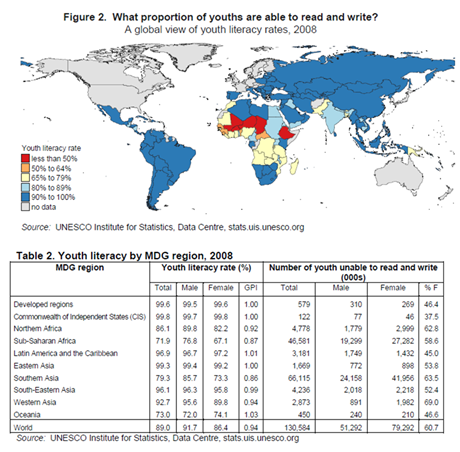According to the United Nations Educational, Scientific and Cultural Organization (UNESCO), there are nearly four billion literate people in the world which gives ample cause for celebration on International Literacy Day, 8th September. Literacy is at the heart of all basic education and is essential in ensuring sustainable development, peace and democracy, a theme which has emerged as the focus of this year’s event.
However, UNESCO also claims that on a global level, approximately 793 million adults lack even the minimum literacy skills. This translates to a staggering statistic of one in five adults classified as illiterate, two-thirds of which are women. In addition, approximately 67.4 million children are out of school, which hinders future learning opportunities. Subsequently, International Literacy Day aims to raise people’s awareness of and concern for literacy problems within their own communities.
January 2003 marked the beginning of a 10 year period which the UN General Assembly proclaimed as the United Nations Literacy Decade. The assembly also welcomed the International Plan of Action for the Decade and asserted UNESCO to take a coordinating role in activities at an international level within the decade’s framework.
Figures produced from a 2008 study, one of the largest of its kind, published in the UNESCO Institute for Statistics 2010 factsheet, recorded 131 million youths (classified as those aged 15-24 years) without basic literacy skills. Among this group, 61% were female. The highest rate of youth illiteracy was concentrated in Southern Asia and sub-Saharan Africa. The global adult literacy rate at that time was 83%, with a male literacy rate of 88% and a female literacy rate of 79%. Similarly, 74% of all adults unable to read and write lived in these same two regions.
However, while ten countries had adult literacy rates of 50% or less, only five countries fell into this category with regard to youth literacy rates: Niger (37%), Mali (39%), Burkina Faso (39%), Chad (45%) and Ethiopia (50%). 2008 figures demonstrated that in almost all countries youth literacy rates were higher than adult literacy rates, indicating that adult literacy rates will continue to improve in the coming years due to progress among younger generations.

Comments